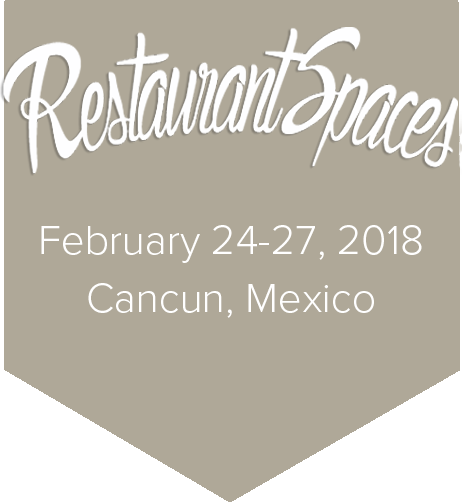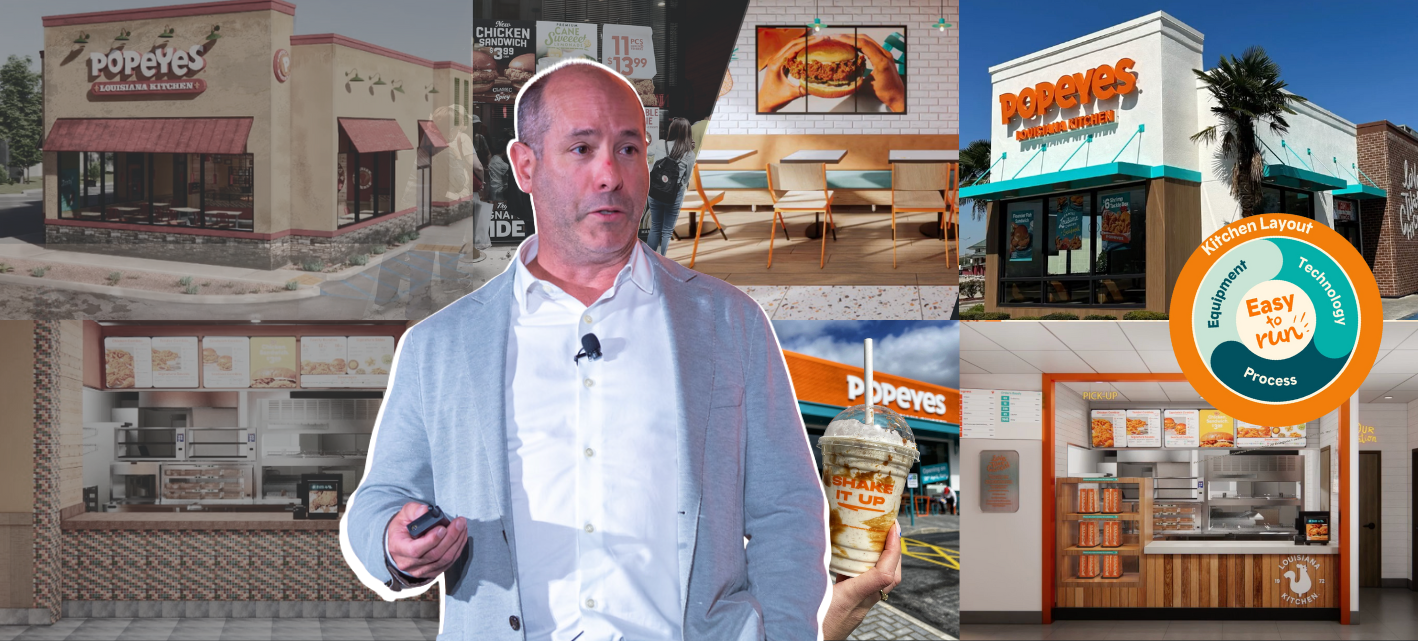"A Livit design opens every eight hours somewhere on the planet," revealed Miguel Chilleron, Director of AI & Design at Livit, setting the stage for an ambitious live demonstration at RestaurantSpaces. Together with Rafael LaRue Pierri, Chief Creative Officer at Livit, the duo proved that what traditionally takes weeks of concept development can now be accomplished in under an hour using AI tools—and they did it in real-time with audience participation.
The result? "Outlier Kitchen," a complete restaurant concept with brand strategy, visual identity, menu items, music playlist, and even uniform mockups, all generated through a systematic AI-driven process that any restaurant innovator can replicate.
The Foundation: Understanding AI as Amplification, Not Automation
Before diving into the step-by-step process, Pierri emphasized a crucial mindset shift: "We see AI not as automation, but as amplification. Something that took a group of 10-12 people can now be done with one person."
The key is treating AI as an assistant that handles tedious research and ideation tasks, freeing creative minds to focus on refinement and problem-solving. "We don't see AI as replacing the design process, but more so supporting it, reducing times like that time machine effect," Pierri explained.
Step 1: Market Research in Minutes (Tool: Perplexity)
Traditional market research takes weeks. AI compresses this into minutes.
The Process:
- Upload your concept parameters (gathered through audience polling in this case: fast-casual, comfort food, relaxed atmosphere)
- Use Perplexity to analyze current market trends, competitor landscape, and consumer behavior
- The tool searches through multiple sources in real-time, providing a comprehensive report with citations
What You Get:
- Relevant market trends and insights
- Competitive landscape analysis
- Consumer behavior patterns
- Market demands and opportunities
"This used to take us two weeks of research plus a week on-site," Pierri noted. "Now we can do this on the plane to the site visit."
Step 2: Brand Strategy Development (Tool: ChatGPT Advanced Reasoning)
With market research complete, the next step involves defining your brand's core identity.
The Process:
- Upload the market research report to ChatGPT
- Use the Advanced Reasoning model for more critical thinking capabilities
- Request a comprehensive brand strategy framework
Key Outputs:
- Brand story and purpose
- Core brand values
- Emotional and rational benefits
- Target customer segments with psychographic profiles
- Guest experience framework
The team emphasized focusing on psychographics over demographics: "A 20-year-old in Texas doesn't behave the same as a 20-year-old in LA. Understanding how they live and why they do it matters more than their age."
Step 3: Visual Identity Creation (Tools: ChatGPT + Midjourney)
Color Palette Development:
- Ask ChatGPT to create a structured color palette with specifications for print, digital, and paint applications
- The AI provides primary/secondary color recommendations with usage percentages
Visual Concept Generation:
- Use ChatGPT to create optimized prompts for Midjourney
- Generate mood boards that reflect your brand strategy and color palette
- Midjourney produces four visual options, each responding to your brand's emotional positioning

The mood board for "Outlier Kitchen".
Design Rendering:
- Create interior concept renderings that respond to your guest experience strategy
- While not architecturally precise, these provide powerful visual inspiration for design direction

The interior design for "Outlier Kitchen".
Step 4: Naming and Logo Development (Tools: ChatGPT + Namelix)
Name Generation:
- ChatGPT prepares all parameters needed for Namelix
- Namelix generates numerous name options with domain availability checking
- In the live demo, the audience voting selected "Outlier Kitchen"
Logo Creation:
- Namelix automatically generates logo concepts based on your chosen name
- Provides multiple variations and applications
- Creates mockups for packaging, digital applications, and merchandise
Step 5: Brand Application and Merchandise (Tool: Recraft)
Transform your visual identity into tangible applications:
- Generate uniform designs (t-shirts, aprons) with your logo
- Create packaging mockups
- Develop merchandise concepts
- Test logo applications across different mediums
"This helps validate whether your logo works across all touchpoints before committing to final designs," Chilleron explained.
Step 6: Atmospheric Design (Tool: ChatGPT + Spotify Integration)
Music Strategy:
- ChatGPT creates playlists based on your brand strategy and target audience
- Integration with Spotify provides actual, playable playlists.
- Can generate multiple playlists for different times/energy levels
🎵 Click here to discover the playlist created live for 'Outlier Kitchen.' 🎵
Step 7: Menu Development (Tools: ChatGPT + DishGen)
Menu Strategy:
- AI analyzes your brand positioning to suggest menu structure
- Recommends optimal number of dishes and taste profiles
- Generates specific menu items aligned with your concept
Recipe Creation:
- Select individual dishes for detailed recipe development
- DishGen creates complete recipes with portions, ingredients, and cooking steps
- Can incorporate existing SKU strategies and seasonal considerations
Key Takeaways:
- Maintain Privacy and Ownership Awareness
Be cautious about uploading proprietary company data. Use privacy modes in AI tools when available, and treat AI outputs as inspiration rather than final deliverables to avoid potential ownership issues. - Focus on Speed to Iteration
The power isn't in getting perfect results immediately, but in rapidly generating multiple options to spark creative discussions and identify promising directions. - Layer Multiple Tools Strategically
Each tool excels at specific tasks. ChatGPT maintains conversation context, Midjourney creates visuals, Perplexity handles research, and specialized tools manage specific applications. - Customize Your Workflow
As you develop expertise, create custom GPTs trained on your specific processes and aesthetic preferences for more consistent results.
The Future of Restaurant Development
The true revolution isn't in eliminating human involvement, but in dramatically reducing the time spent on research and initial ideation—allowing restaurant innovators to focus more energy on refinement, problem-solving, and creating genuinely differentiated experiences.
The message is clear: start experimenting now. These tools are accessible, many have free versions, and the learning curve is manageable. As Chilleron warned, "If you are not experimenting now, you will be catching up later."
The workshop proved that the question isn't whether AI will transform restaurant development; it already has. The question is whether you'll lead the transformation or follow it.

Posted by
Chain Restaurants Reimagined.
The Retreat to Reimagine Restaurant Development, Design + Technology.
April 12-14, 2026 | Miami, FL



-1.png)

-3.png)
-4.png)
-3.png)



Comments